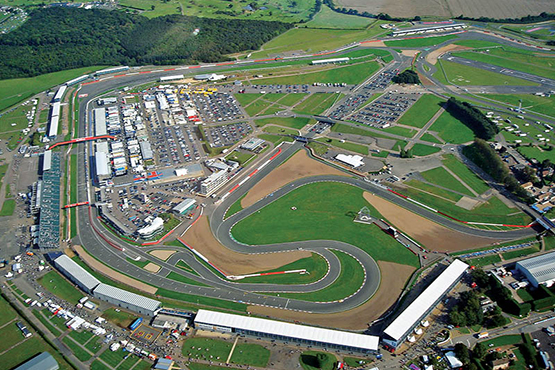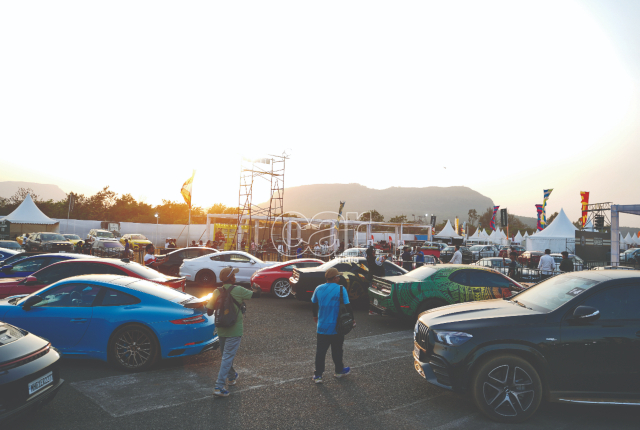
Formula One is the pinnacle of motor sport on four wheels today, but have you ever wondered how it got there?

Formula One is considered to be the epitome of competitive motor racing, the absolute top order of racing on four wheels. This is because F1 racing brings together cutting-edge automotive technology with millimetre-perfect precision, which together deliver unprecedented levels of performance for a car on four wheels. From the immense power and even more eye-popping power-to-weight ratio to the face-ripping stopping time and distance, an F1 car today is the result of years of evolution; trying and testing various automobile innovations for performance and safety while trying to do more with less. Let’s take a look at how it has reached where it is today with our compilation of notable ‘first-ever’ occurrences in F1.

The first-ever Formula-specification race took place in 1947. However, Formula One regulations came into existence only in 1950, the year the first official world championship race took place

The very first venue to host an F1 race was Silverstone in the United Kingdom on 13 May 1950. Now we know why it’s considered hallowed ground by many Formula One racers today

There were 14 participants in the first-ever world championship: 10 independent teams and just four works teams: Alfa Romeo, ERA, Maserati and Talbot

The first Formula One engines were to be one of two kinds: either a 1.5-litre unit with forced-induction or a 4.5-litre naturally aspirated unit. Engines were a unique feature of each car in the early championships, with no specific regulations on engine layout or the number of cylinders. In 1951, Alfa Romeo ran an inline-eight, 1.5-litre compressor engine, while Ferrari and OSCA ran 4.5-litre naturally aspirated V12 engines. There was also a V16 engine raced in 1951. British Racing Motors (BRM) ran a 1.5-litre compressor engine. It was essentially two 750-cc V8s joined and supercharged with compressors specifically created by Rolls-Royce for racing, producing 612 PS at 12,000 revolutions per minute

The first-ever pole position in F1 was earned by Giuseppe Farina for Alfa Romeo at the 1950 British Grand Prix at Silverstone. He also went on to record the first-ever hat-trick in the very first race by taking the fastest lap and also winning the first-ever race in F1 championship history

The winner of the first F1 world championship was Emilio Giuseppe Farina of Italy. Racing with Alfa Romeo in a 158 Alfetta, he scored 30 points, winning three out of seven races and claiming one points finish in the first official world championship in 1950. The Argentine, Juan Manuel Fangio, was a close second, also winning three races, but not scoring any more points
Advances in technology pushed by the need to be more competitive led to the introduction of more firsts in 1954, when Mercedes launched the W196. Designed by Rudolf Uhlenhaut, it featured fuel-injection and desmodromic valves

Taking performance higher were the mid-engined cars, which offered better weight distribution. Although this configuration was adopted by Ferdinand Porsche for his Auto Union in the 1930s for the pre-War era races, mid-engined cars with rear-drive were only introduced by Cooper in 1957
Until 1957, the championship only awarded drivers. The first constructor’s championship was recognised in 1958
While many consider the first pit-stop for re-fuelling to be Nelson Piquet in 1982, it was, in fact, Juan Manuel Fangio who came in for fuel and tyres in the 1957 German GP. Fangio went on to win the race on the final lap

Pit-stop incidents were prevalent by and large, but these went up with the advent of re-fuelling. By far, the most intense was the fire during Jos Verstappen’s pit-stop during the German GP in 1994. This was the first incident which made the governing body step in to announce that a pit crew member prepped with a fire extinguisher was mandatory for every pit-stop
The first aluminium-sheet monocoque chassis made its début in 1962, when Colin Chapman introduced
the Lotus 25
The first sponsorship deal arose in F1 when Lotus painted their cars with Imperial Tobacco colours, featuring Gold Leaf branding in 1968
F1 witnessed its first racing fatality on April 11, 1955, during the Pau Grand Prix in France, when Mario Alborghetti lost his life following an accident
Compiled by: Jim Gorde





















Leave a Reply